The ‘material turn’ in Human Computer Interaction (HCI) is increasingly drawing attention to the computational affordances of materials and how we can craft with them. In this paper, we explore opportunities for combining the maker cultures of hand spinning with e-textile crafting. In our first study, we interviewed 32 hand
spinners on their practices to better understand their motivations for spinning their own yarns and the techniques they use to do so. In our second study, we conducted workshops with 6 spinners at a local spinning guild, where participants worked with the conductive fibers and spun e-textile yarns. After the workshops, we
conducted follow-up interviews with each participant to understand the opportunities and tensions of hand spinning e-textileyarns. Our findings show how spinners can blend local materials with conductive ones to develop their own custom interactive textiles, and the mismatch between how these fibers are sold and what information spinners require to inform their design decisions. Through these results, we hope to empower makers and inspire the design community to develop tools to support these DIY practices
This research is published here: https://doi-org.proxy.queensu.ca/10.1145/3643834.3660717
Wool fleece from a local sheep named Dolly was dyed, hand spun, and plied with conductive fibers to make a hank of conductive yarn. Participants described how hand spinning included design decisions that go all the way back to fiber sourcing.

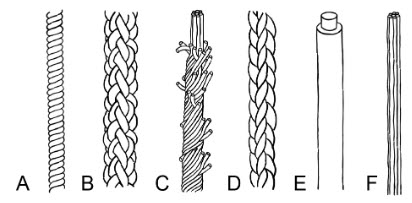
Researchers in HCI have used the following yarn fabrication techniques to create e-textile yarns: (A) plying, (B)braiding, (C) core spun, (D) knit cord, (E) coating, (F) filament, as well as combinations of the above.
Drop spindles can be hand carved and participants expressed valuing this DIY self-sufficiency. Photo courtesy of Paul Sparling.
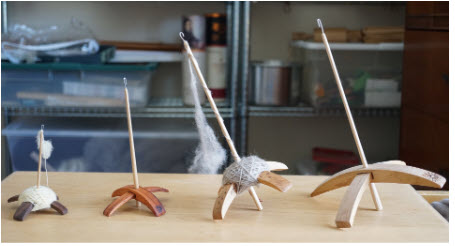
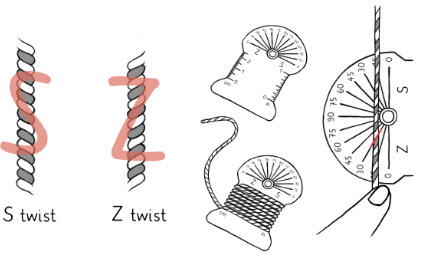
Spinners have yarn gauges for quality control. They allow spinners to assess Wraps Per Inch (WPI, here: 8) and Angle of Twist (AoT, here: a 30 degree Z twist) to ensure the
replicability and consistency of yarns.
Hand-spun, conductive yarn can be created by blending fibers together (top) or by plying conductive and non-conductive singles together (bottom).
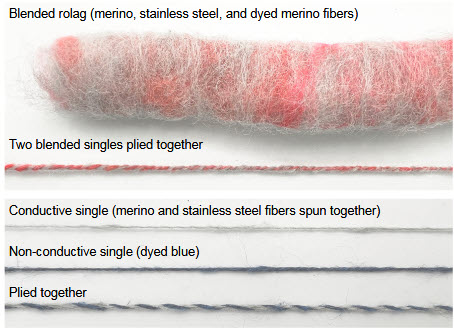
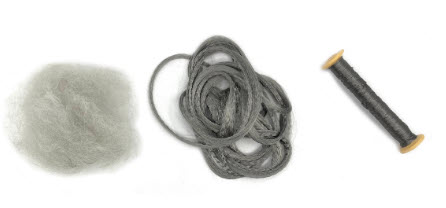
Materials available during the workshop included (left to right) Merinox from Bart & Francis, conductive stainless steel filament from Adafruit, and stainless steel conductive thread from Sparkfun.
Participants experimented with (1) spinning the e-fibers, (2) measuring conductivity with a multimeter, and
then (3) using the Adafruit Circuit Playground Express and block coding to program capacitive touch interactions.

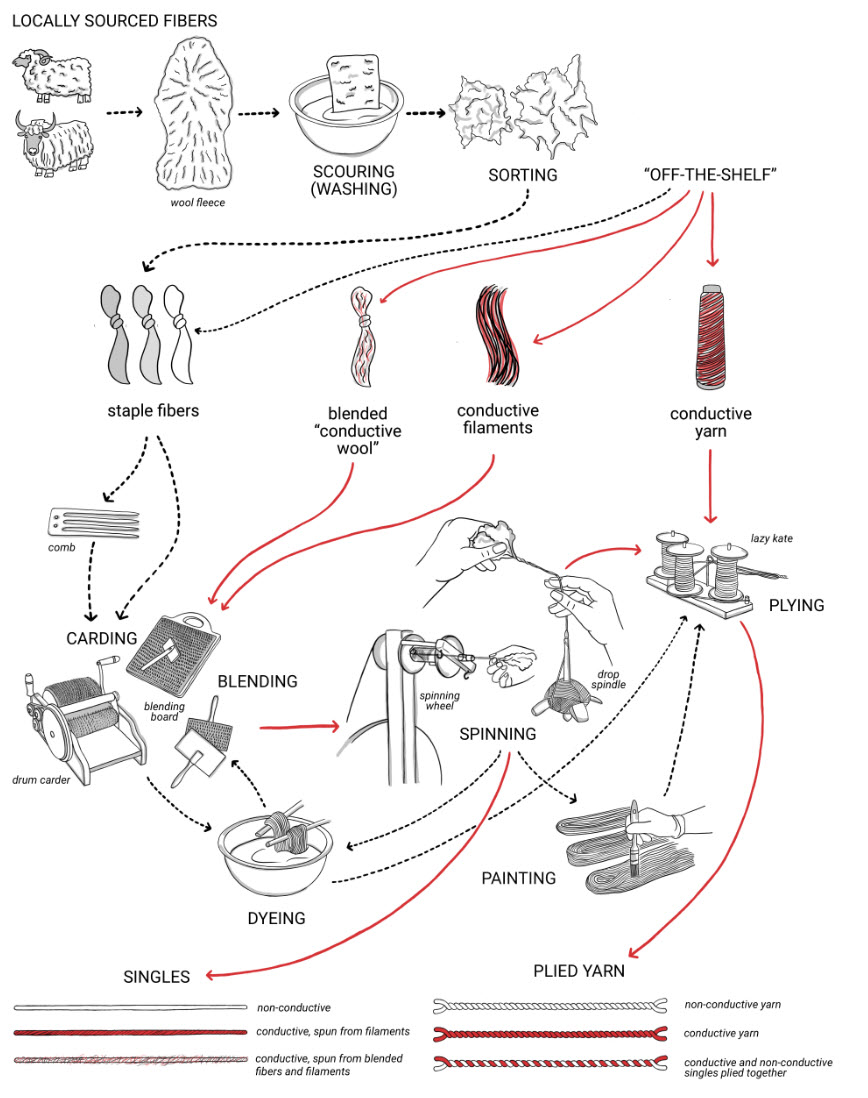
Hand spinning process with conductive fibers. Areas with red solid lines were explored in the workshops in Study 2,
the dotted lines show the expanded space discussed in the interviews in Study 1. This overview provides opportunities for e-textile researchers to leverage spinning techniques and design variables to customize their yarns
Participants created e-textile yarns that were conductive and could “blend” into textile projects.

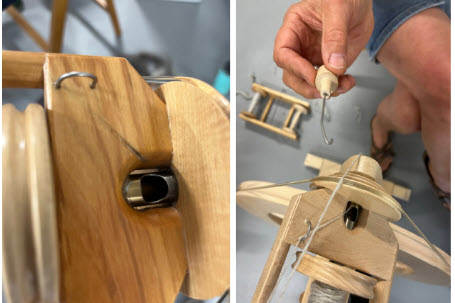
Participants showed us areas of the wheel that naturally get worn down from the friction between materials
and the wood (left). Participants discussed wanting to have a tool to measure yarn while spinning. One group discussed creating a wheel orifice hook that could do so and having yarn measurements available “on wheel” (right).
Acknowledgements
We would like to thank our study participants who each generously contributed their time to share and discuss their spinning practices with us. This project was funded by the National Sciences and Engineering Research Council of Canada (NSERC) through a Discovery Grant (2021-04135), its Discovery Supplementary Fund (2021-00310), as well as through an NSERC Postdoctoral Fellowship Award. We acknowledge the support of Ontario Research Fund and Canadian Foundation for Innovation for this research. We received further support from the Lower Saxony Ministry of Science and Culture (Germany) within the “SPRUNG” actions: Digitopias Digital Technologies for Participation and Interaction in Society”.
(Creator’s Lounge)